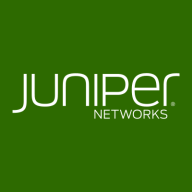

Nmap and Marvis Virtual Network Assistant are competing products for network analysis. While Nmap is favored for security scanning, Marvis leads in AI-driven insights, making it preferable for ongoing network management despite higher costs.
Features: Nmap is strong in network discovery, detailed security auditing, and port scanning, ensuring comprehensive security diagnostics. Marvis uses machine-learning capabilities for predictive insights, automated troubleshooting, and network health monitoring.
Room for Improvement: Nmap can improve in ease of use for non-expert users, offer better customer support options, and expand features for real-time monitoring. Marvis can enhance integration with third-party tools, reduce reliance on cloud-only solutions, and provide more flexibility in pricing structures.
Ease of Deployment and Customer Service: Nmap is lightweight and easy to set up, focusing on a simple implementation process that requires fewer resources. Marvis offers a cloud-based deployment with extensive customer service, proactive support, and automatic updates, appealing to larger enterprises seeking comprehensive oversight.
Pricing and ROI: Nmap is cost-effective due to its open-source model, minimizing initial costs and offering a solid return through its security functions. Marvis, while potentially more expensive initially, provides significant ROI through reduced network interruptions and comprehensive insights, justifying the cost for proactive network management organizations.
| Product | Market Share (%) |
|---|---|
| Nmap | 0.6% |
| Marvis Virtual Network Assistant | 0.3% |
| Other | 99.1% |


| Company Size | Count |
|---|---|
| Small Business | 9 |
| Midsize Enterprise | 1 |
| Large Enterprise | 11 |
Marvis is the first network assistant in the industry to bring conversational AI to networking, transforming the way IT teams interact and engage with enterprise networks. In the era of AIOps, Marvis delivers streamlined operations, simplified troubleshooting, and remarkable user experiences.
Nmap ("Network Mapper") is a free and open source (license) utility for network discovery and security auditing. Many systems and network administrators also find it useful for tasks such as network inventory, managing service upgrade schedules, and monitoring host or service uptime. Nmap uses raw IP packets in novel ways to determine what hosts are available on the network, what services (application name and version) those hosts are offering, what operating systems (and OS versions) they are running, what type of packet filters/firewalls are in use, and dozens of other characteristics. It was designed to rapidly scan large networks, but works fine against single hosts. Nmap runs on all major computer operating systems, and official binary packages are available for Linux, Windows, and Mac OS X. In addition to the classic command-line Nmap executable, the Nmap suite includes an advanced GUI and results viewer (Zenmap), a flexible data transfer, redirection, and debugging tool (Ncat), a utility for comparing scan results (Ndiff), and a packet generation and response analysis tool (Nping).
We monitor all Network Monitoring Software reviews to prevent fraudulent reviews and keep review quality high. We do not post reviews by company employees or direct competitors. We validate each review for authenticity via cross-reference with LinkedIn, and personal follow-up with the reviewer when necessary.